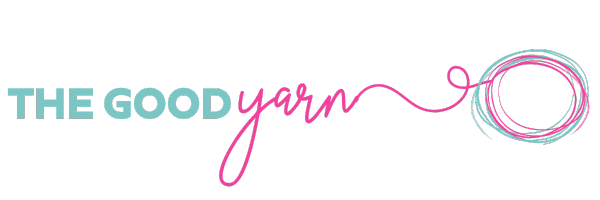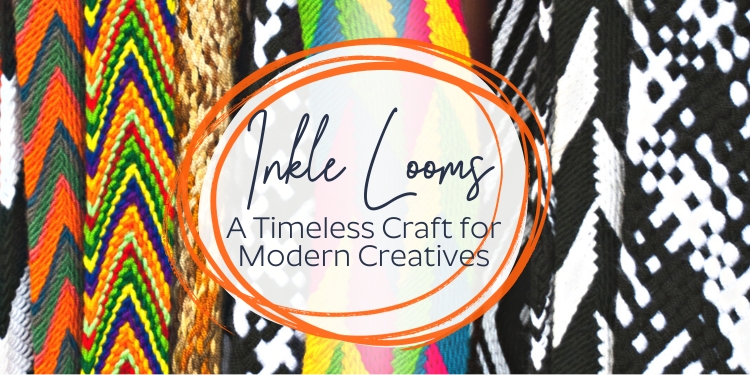Weaving
Inkle Loom Weaving: A Timeless Craft for Modern Creatives
Inkle Loom Weaving: A Timeless Craft for Modern Creatives
Inkle looms weaving has been an essential craft throughout human history. The development of various loom types has allowed fibre artists to create intricate patterns and textiles. Among these looms, the Inkle and Inklette looms stand out. Both for their unique name, versatile capabilities, and rich history. In this exploration of Inkle looms, we will delve into their origins. We show the creative possibilities they offer, their distinctions from rigid heddle looms, and recommendations for beginners.
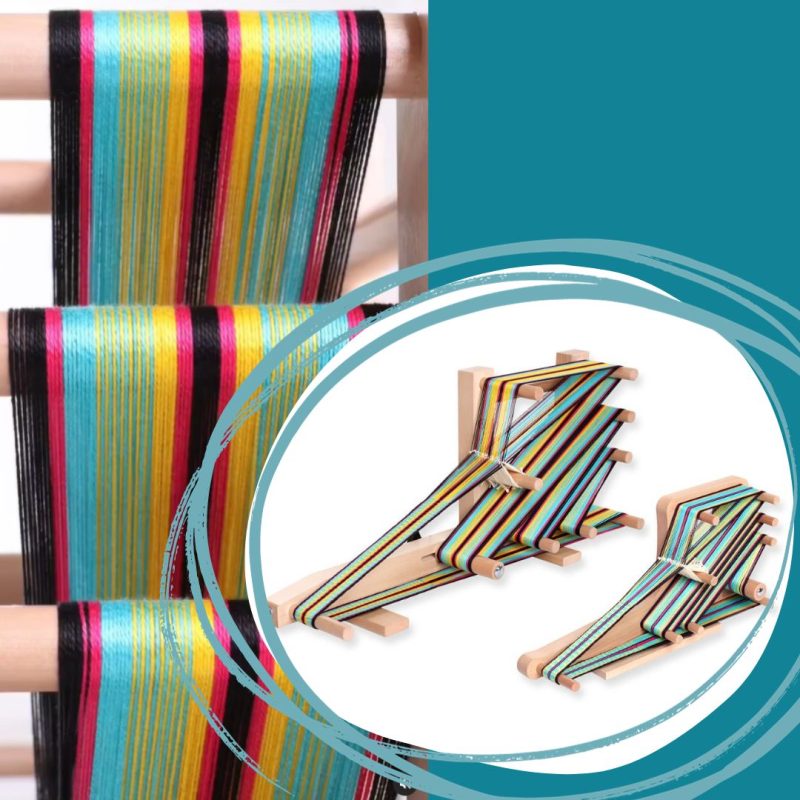
We will also discuss suitable yarn choices, the weaving width of the Ashford Inkle Loom, and finishing techniques. All with a special focus on the Ashford Inkle Loom and the Inklette Loom.
Why is it called an Inkle Loom?
The term “Inkle” may sound unusual, but its origin has a charming story. Inkle weaving is believed to have its roots in England during the 16th century. Initially it was initially known as “linckle” or “lincoln green tape.” The word “inkle” is thought to be a corruption of “linckle.” This weaving technique gained popularity for producing narrow, colorful bands used for various purposes, from clothing embellishments to bag straps.
The distinctive name “Inkle” has stuck with this type of loom over the centuries. Today, it refers to a small, portable loom primarily designed for weaving narrow bands, belts, and straps. Its name echoes its historical significance and the traditions it continues to uphold.
What Can You Make on an Inkle Loom?
Inkle looms are versatile tools for creating a wide range of woven items. While their narrow width limits the size of the finished pieces, they excel at producing intricate patterns and decorative bands. Some common projects include:
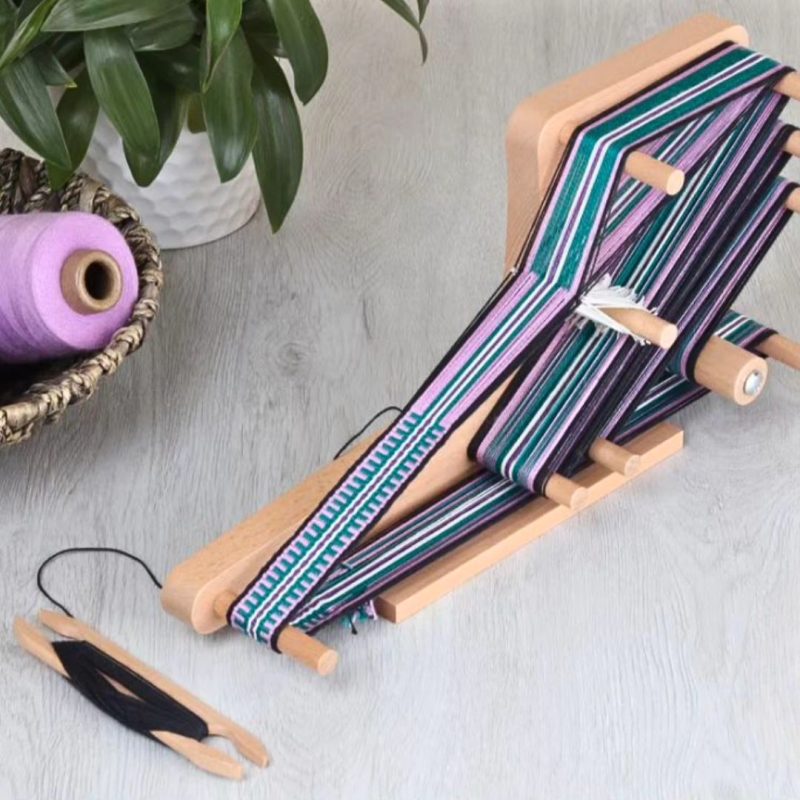
- Belts and Straps: Inkle looms are perfect for crafting durable and visually appealing belts, guitar straps, camera straps, and bag handles. The ability to weave intricate designs makes these accessories unique and personalized.
- Bookmarks: Inkle-woven bookmarks are a delightful way to showcase your weaving skills and make thoughtful gifts for book lovers. You can experiment with different color combinations and patterns.
- Keychains and Lanyards: Create stylish and durable keychains or lanyards by weaving colorful designs. These small projects are excellent for beginners to practice their skills.
- Trim and Edging: Inkle weaving can be used to add decorative trim to clothing, costumes, or home textiles like curtains and pillowcases. The narrow bands can add a touch of elegance to various items.
- Historical Reproductions: Inkle looms are often used in historical reenactments. They are used to recreate authentic belts, straps, and trims for period costumes and accessories.
What is the Difference Between Rigid Heddle and Inkle Looms?
Rigid heddle looms and Inkle looms are both versatile weaving tools, but they have distinct differences:
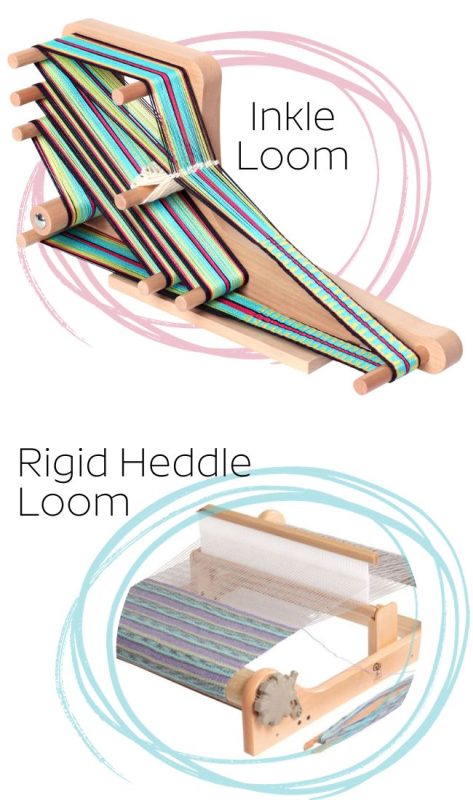
- Weaving Width: One of the primary distinctions is the weaving width. Inkle looms are designed for narrow weaving, typically producing bands that are a few inches wide. Rigid heddle looms, on the other hand, have a broader weaving width. This allows for the creation of larger textiles like scarves and shawls.
- Complexity of Patterns: Inkle looms are well-suited for weaving intricate patterns and designs. This is thanks to their simple shedding mechanism and ability to manipulate individual warp threads. Rigid heddle looms are capable of producing patterns, but the process is generally simpler compared to Inkle weaving.
- Portability: Inkle looms are extremely portable due to their compact size and lightweight construction. Rigid heddle looms are bulkier and less portable, making them better suited for stationary weaving.
- Versatility: Rigid heddle looms offer more versatility in terms of the types of projects you can create. This is due to their larger size. Inkle looms excel in producing narrow bands and straps but are limited in the size of the finished products.
What is the Best Inkle Loom for Beginners?
For beginners looking to explore the art of Inkle weaving, the Ashford Inkle Loom and the Inklette Loom are excellent choices. These looms are known for their quality and ease of use, making them ideal for those new to weaving.
The Ashford Inkle Loom is a tabletop loom that offers a weaving width of approximately 4.75 inches or 12cm. This makes it suitable for a wide range of Inkle weaving projects. It is made of durable New Zealand silver beech and features an adjustable tensioning system. This is crucial for achieving consistent and well-tensioned bands. The Ashford Inkle Loom comes with clear instructions, making it beginner-friendly and a great introduction to the craft.
The Ashford Inklette Loom, as its name suggests, is a smaller version of the Ashford Inkle Loom. It is incredibly portable and has a weaving width of approximately 2.25 inches (5.6cm), making it perfect for on-the-go weaving projects. Despite its compact size, it maintains the same level of quality and craftsmanship as its larger counterpart. Therefore making it an excellent choice for beginners who want a more compact option.
Both of these looms are praised for their user-friendly design. They both include clear warping and weaving instructions, making them accessible to novice weavers.
What Yarn is Best for an Inkle Loom?
Choosing the right yarn for your Inkle weaving projects is crucial to achieving the desired results. Here are some considerations when selecting yarn for your Inkle loom:
- Cotton and Cotton Blends: Cotton yarn is a popular choice for Inkle weaving. This is because of its durability, smooth texture, and ability to hold vibrant colours. It’s an excellent choice for belts, straps, and other wearable items.
- Mercerised Cotton: Mercerised cotton has been treated to increase its strength and luster. It’s a great option for achieving a polished and shiny finish in your Inkle bands.
- Linen: Linen yarn is another durable option that produces a textured and rustic look. It’s suitable for creating a more natural and earthy feel in your woven items.
- Synthetic Blends: Some weavers opt for synthetic yarn blends. These can be cost-effective and come in a wide range of colours. These blends can also be a good choice for experimenting with different patterns and designs.
- Wool: While less common, wool yarn can be used for Inkle weaving. Especially if you want a warmer and softer end product. Keep in mind that wool may require different finishing techniques compared to cotton or linen.
The choice of yarn will depend on the specific project you have in mind. Also, your personal preferences for texture, colour, and durability.
How Wide Can You Weave on an Ashford Inkle Loom?
The Ashford Inkle Loom offers a weaving width of approximately 4.75 inches or 12cm.
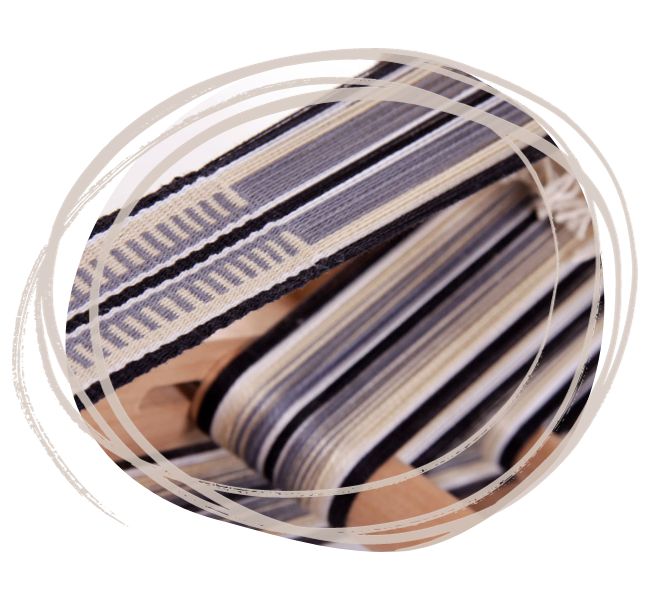
This width is sufficient for a wide range of Inkle weaving projects, including belts, straps, bookmarks, and decorative trims. While it may not accommodate larger textiles like scarves or table runners, it excels at producing narrow, intricate bands.
Helping to weave them with precision and consistency. The adjustable tensioning system on the Ashford Inkle Loom ensures that your woven bands are well-tensioned and of high quality.
How Do You Finish Off Your Inkle Weaving?
Finishing Inkle weaving is a crucial step to ensure that your woven bands are durable, neat, and ready for use. Here are the key steps in finishing Inkle weaving:
- Cutting Off the Loom: Once you’ve completed your weaving project, carefully cut the finished band from the loom. Leaving a bit of extra warp thread on each end for tying and securing.
- Tying Warp Ends: Tie knots at both ends of the band to secure the warp threads and prevent unraveling. You can use overhand knots or other secure knots, depending on your preference.
- Trimming Excess: Trim any excess warp threads that extend beyond the knots to create a clean and neat finish.
- Washing and Blocking: Depending on the yarn used, you may want to gently wash your Inkle band. This may be to remove any sizing or dirt. After washing, block the band by laying it flat and shaping it to the desired dimensions. Allow it to dry completely.
- Fringe or Hemming: You can finish the ends of your Inkle band with fringe. Simply twisting the warp threads together, or by hemming them for a neater look.
- Pressing: If desired, lightly press the finished band with a warm iron to set the weave and improve its appearance.
- Trimming Selvedges: Trim any uneven or untidy selvedges (edges) to create a clean and uniform appearance.
Finishing techniques can vary depending on the project and the desired outcome.
Experimentation with different finishing methods can add unique character to your Inkle-woven items.
Inkle looms, with their fascinating history and creative potential, are a delightful entry point into the world of weaving. The Ashford Inkle Loom and Inklette Loom, with their user-friendly designs, are excellent choices for beginners. The choice of yarn, weaving width, and finishing techniques can all be tailored to your specific project goals. Whether you’re weaving a colourful belt, or a decorative trim, Inkle looms allow you to express your creativity. All the while carrying on a timeless craft tradition.
